Text
Stan Getz and Chet Baker - "Just Friends" 1983
Stan Getz & Chet Baker – The Stockholm Concerts
Bass – George Mraz
Drums – Victor Lewis
Piano – Jim McNeely
Tenor Saxophone – Stan Getz
Trumpet – Chet Baker
6 notes
·
View notes
Text
Jaco Pastorius & Toots Thielemans - Three Views of a Secret
Belgium, 1985.
Jaco Pastorius - piano
Jean 'Toots' Thielemans - harm
Source: TheWorldofJazz jazz&art
0 notes
Text
Remebering Paul Chambers on his birthday !!
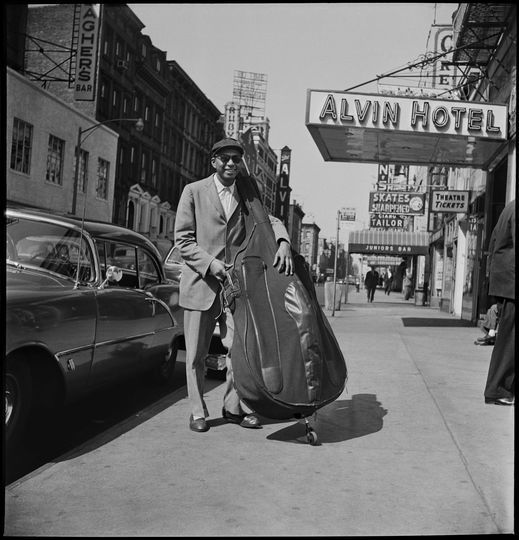
Paul Chambers in Manhattan on the way to the Whims of Chambers recording session, 21 September, 1956.
Paul Laurence Dunbar Chambers, Jr. (April 22, 1935 – January 4, 1969) was a jazz double bassist.
A fixture of rhythm sections during the 1950s and 1960s, his importance in the development of jazz bass can be measured not only by the length and breadth of his work in this short period but also his impeccable time and intonation, and virtuosic improvisations.
He was also known for his bowed solos.
Chambers recorded some dozen albums as a leader or co-leader, and prolifically as a sideman notably as the anchor of trumpeter Miles Davis's "first great quintet" (1955-63) and with pianist Wynton Kelly (1963-68).
Photo by © Francis Wolff
Source: www.facebook.com/TheWorldOfJazz
*****
Paul Laurence Dunbar Chambers, Jr. (22 de abril de 1935 - 4 de enero de 1969) fue un contrabajista de jazz.
Un fijo de las secciones rítmicas durante las décadas de 1950 y 1960, su importancia en el desarrollo del bajo de jazz puede medirse no sólo por la longitud y amplitud de su obra en este corto periodo, sino también por su impecable compás y entonación, y sus virtuosas improvisaciones.
También era conocido por sus solos de arco.
Chambers grabó una docena de álbumes como líder o colíder, y fue muy prolífico como músico de acompañamiento, sobre todo como ancla del "primer gran quinteto" del trompetista Miles Davis (1955-63) y con el pianista Wynton Kelly (1963-68).Chambers recorded some dozen albums as a leader or co-leader, and prolifically as a sideman notably as the anchor of trumpeter Miles Davis's "first great quintet" (1955-63) and with pianist Wynton Kelly (1963-68).
10 notes
·
View notes
Text
Miles Davis composing at his keyboard in a recording studio, December 1st, 1970 Publication: GQ
by Mark Patiky
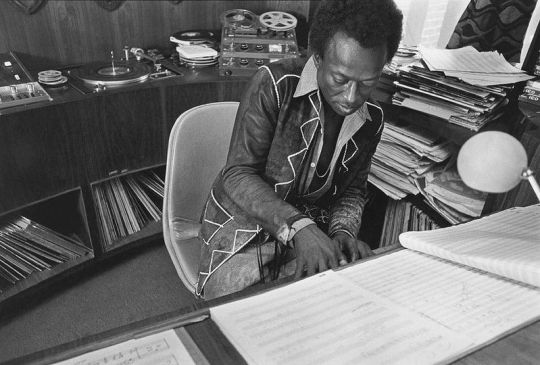
9 notes
·
View notes
Text
youtube
Nucleus were a British jazz-fusion band, which continued in different forms from 1969 to 1989.In 1970, the band won first prize at the Montreux Jazz Festival, released the album Elastic Rock, and performed both at the Newport Jazz Festival and the Village Gate jazz club.
The band was established by Ian Carr, who had been in the Rendell–Carr Quintet during the middle and late 1960s. Their debut album, Elastic Rock, and the next two collections, We'll Talk About It Later (1970) and Solar Plexus (1971), were all released on Vertigo Records, and music journalist Colin Larkin noted were "vital in any comprehensive rock or jazz collection".
In August 2005, a reincarnation of Nucleus with old and new members performed at Cargo in London. This was followed on 30 March 2007 by a Nucleus Revisited concert at London's Pizza Express Jazz Club as part of a series of concerts to mark the tenth anniversary of Jazzwise magazine. Nucleus Revisited included Geoff Castle, Mark Wood, and Tim Whitehead and on trumpet, as at the 2005 Cargo concert, Chris Batchelor. Although Ian Carr did not play due to ill health, he was present at the concert and received a standing ovation. On 4 August 2009, #NucleusRevisited appeared at Ronnie Scott's Jazz Club in London with Michael Garrick's Quartet as part of their two-week-long Brit Jazz Fest.
Source: jazzanews
Electric bass - Roger Sutton
Drums, Percussion, Timpani - Roger Sellers
Guitar - Ken Shaw
Keyboards, synthesiser [Moog] - Geoff Castle
Soprano saxophone, alto saxophone, baritone saxophone, flute - Bob Bertles
Trumpet, flugelhorn, synthesizer - Ian Carr
0 notes
Video
youtube
Horace Silver Sextet - Tokyo Blues - 1987
David 'Dave' Douglas - trumpet
Vincent Herring - as, ts, fl
Horace Silver - piano
Brian Bromberg - bass
Carl Burnett - drums
Andy Bey - vocals
2 notes
·
View notes
Text
"Be-bop was about change, about evolution. It wasn't about standing still and being safe". - Miles Davis
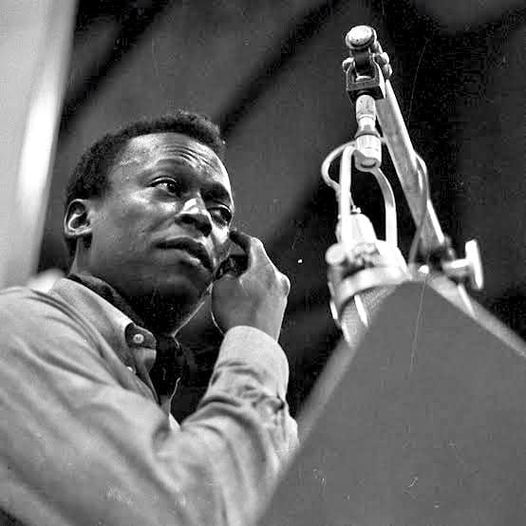
"El be-bop tenía que ver con el cambio, con la evolución. No era sobre quedarse quieto y estar seguro". - Miles Davis
1 note
·
View note
Text
When Miles Davis named the five geniuses of American music
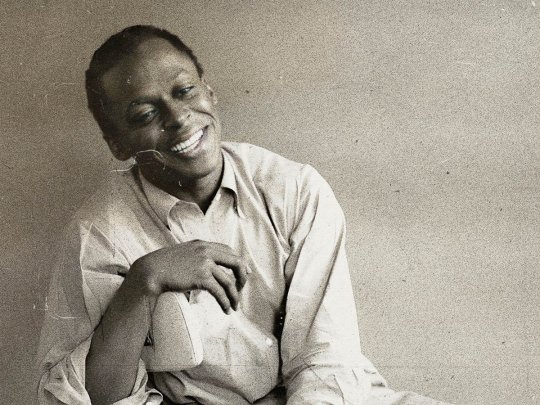
(Credits: Far Out / Tom Palumbo)
Dale Maplethorpe (Far Out Magazine):
Miles Davis will go down as arguably one of the most honest musicians who ever became famous, perfectly personified by his attendance at an awards ceremony at the White House. When asked by someone he described as a “politician’s wife” why America is so keen on neglecting jazz, he answered, “Jazz is ignored here because the white man likes to win everything.”
The woman asked in retaliation, “What have you done that’s so important in your life?”, to which he responded, “Well, I’ve changed music five or six times.”
He’s not wrong, either. The release of specific Miles Davis albums, from Birth of the Cool to Kind of Blue to Bitches Brew, are viewed less as good moments in musical history and instead as defining moments in American culture. He is the most influential trumpeter and one of the most influential musicians to ever take to the stage, with a sound and style that would shape how America – and subsequently the world – viewed the production of sound.
His honest attitude towards himself and his music contributed to his success. He could critique himself to the extent that he could bring out the best in his music. He could also look at the music surrounding him to see what was missing and pick out what was wrong with the current musical landscape. That often led to him getting in trouble with some artists, but it also meant when we see the names of those he refers to as geniuses, we can take it at face value.
Davis had previously rubbed American composer Leonard Bernstein the wrong way when he refused to play anything from West Side Story, saying he thought it was “corny shit”. However, when he wrote to Bernstein on his 70th birthday, with decades to reflect on the music and see its impact on the world, he was willing to admit that Berstein was a genius. In doing so, he listed the five people who shaped American music, changing it for the better forever.
Davis dismissed his previous comments in his letter, confessing West Side Story “turned out to be a classic.” He also noted that Bernstein is one of the great geniuses of American Music. “You are one of America’s true geniuses, along with Monk, Gillespie, Mingus and Parker,” he said.
There is no doubt, looking back, that Davis’s comments on Bernstein are correct. He was one of the first composers whose music expanded outside of America, leading to him cementing himself as one of the greats with a plethora of accolades attached to his name. The same can be said about Thelonious Monk, who worked with Davis previously and had a unique improvisational style that broke barriers and showed musicians how limitless their sounds could be.
The other musicians Davis refers to are Dizzy Gillespie, Charles Mingus and Charlie Parker. All of them were musicians who had worked well with Davis in the past and helped contribute towards the musical landscape that eventually enveloped American culture. There is no doubt that Miles Davis changed music about five or six times, as he professed during that White House dinner, and Bernstein, Monk, Gillespie, Mingus and Parker are four or five musicians who helped him change it.
Credits: faroutmagazine.co.uk
5 notes
·
View notes
Text
In 1973 Ella Fitzgerald & Henry Mancini collaborated on an advert for Jim Beam bourbon.

En 1973 Ella Fitzgerald & Henry Mancini colaborarón en un anuncio del bourbon Jim Beam.
5 notes
·
View notes
Text
"I didn't try to create something that was difficult to play. I just composed music that reflected my thoughts. I knew the musicians would play it, because it sounded good".
Thelonious Monk

"No intenté crear algo que fuese difícil de tocar. Me limité a componer música que reflejase mis pensamientos. Sabía que los músicos le meterían mano, porque sonaba bien"
Thelonious Monk
youtube
34 notes
·
View notes
Text
"La esencia de la improvisación es permitir que la música surja por sí misma"
"The essence of improvisation is to allow the music to emerge on its own".
Sonny Rollins
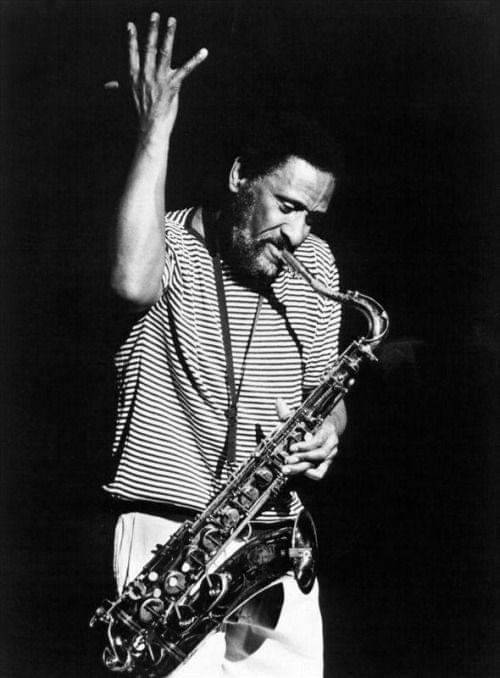
youtube
Sonny Rollins (ts)
Wilbur Ware (b)
Elvin Jones (ds)
Donald Baily (b)
Pete La Roca (ds)
3 notes
·
View notes
Text
youtube
Guitarist, singer and songwriter Lacy Gibson (1936-2011) may not have been too well known among fans, although I'm sure many of you have heard him, without remembering he was there, on the Son Seals Live and Burning album. He also played and/or recorded with Jimmy Reed, Earl Hooker, Junior Wells, Buddy Guy, Willie Dixon, Otis Rush, Willie Mabon, and even accompanied jazz musicians such as Duke Ellington and Count Basie. He was a versatile, flamboyant guitarist with a passionate voice. Just listen to "Easy Woman" from the album Switchy Titchy.
***
Quizás el guitarrista, cantante y compositor Lacy Gibson (1936-2011) no haya sido demasiado conocido entre los aficionados/as aunque seguro que muchos/as lo habéis escuchado, sin recordar que estaba, en el disco de Son Seals Live and Burning. Además tocó y/o grabó con Jimmy Reed, Earl Hooker, Junior Wells, Buddy Guy, Willie Dixon, Otis Rush, Willie Mabon, e incluso acompañó a músicos de jazz de la talla de Duke Ellington o Count Basie . Era un guitarrista versátil, llamativo y con una voz apasionada. No hay más que escuchar "Easy Woman" recogida en el disco Switchy Titchy.
(Fuente: Eugenio. latabernadelblues,com)
desde: pasión por el jazz y blues
#Youtube#blues#guitar#jimmy reed#earl hooker#junior wells#duke ellington#count basie#buddy guy#willie dixon#otis rush#willie mabon
0 notes
Text
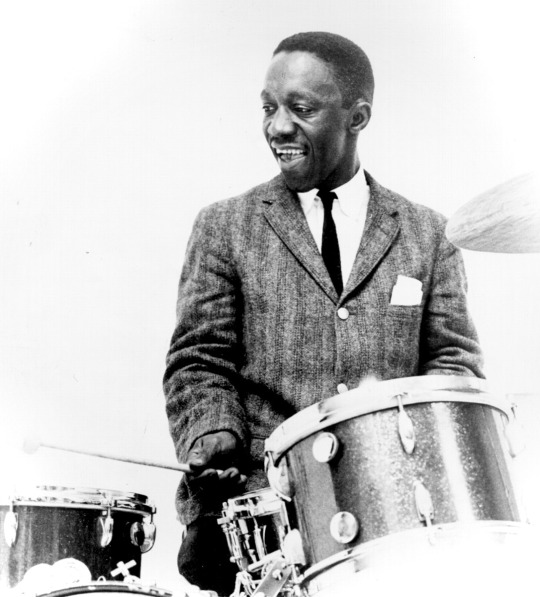
Art Blakey in a studio portrait 1964
photo: Getty Images
143 notes
·
View notes
Text
V.S.O.P.: The Quintet
Review by Richard S. Ginell
With the cheers and huzzahs from their 1976 one-off reunion still resounding, the reconstituted Miles Davis Quintet minus Miles went on the road in 1977, spreading their 1965-vintage gospel according to the Prince of Darkness to audiences in Berkeley and San Diego, CA. In doing so, Herbie Hancock, Wayne Shorter, Ron Carter, and Tony Williams, plus interloper Freddie Hubbard seem to pick up where they left off, with a repertoire mostly new to the five collectively and developed from there. It isn't exactly the same -- you miss Miles' brooding presence and sense of space in Hubbard's busy, fiery playing, and Hancock is a more harmonically daring, assertive player than he was with Miles -- but the interlocking telepathy and individual virtuosity of the musicians is pretty amazing. This also isn't the best tape from the tour; they were even tighter and more volatile in Japan five days later on Sony's Tempest in the Colosseum. The V.S.O.P. tours amount to a pit stop in the general shape of Hancock's evolution, but their influence upon the direction of jazz as a whole in the '80s and '90s would be staggering.
Source: allmusic.com
youtube
V.S.O.P.: The Quintet
Reseña por Richard S. Ginell
Con los vítores y hurras de su única reunión de 1976 todavía resonando, el reconstituido Miles Davis Quintet menos Miles salió a la carretera en 1977, difundiendo su evangelio de 1965 según el Príncipe de las Tinieblas al público de Berkeley y San Diego, CA. Al hacerlo, Herbie Hancock, Wayne Shorter, Ron Carter y Tony Williams, más el intruso Freddie Hubbard, parecen retomarlo donde lo dejaron, con un repertorio en su mayor parte nuevo para los cinco colectivamente y desarrollado a partir de ahí. No es exactamente lo mismo (se echa de menos la presencia melancólica de Miles y la sensación de espacio en la forma de tocar fogosa y ajetreada de Hubbard, y Hancock es un intérprete más atrevido y asertivo armónicamente de lo que era con Miles), pero la telepatía entrelazada y el virtuosismo individual de los músicos es bastante asombroso. Esta tampoco es la mejor cinta de la gira; en Japón, cinco días después, en Tempest in the Colosseum, de Sony, se mostraron aún más unidos y volátiles. Las giras de V.S.O.P. suponen una parada en boxes en la evolución general de Hancock, pero su influencia en la dirección del jazz en su conjunto en los años 80 y 90 sería asombrosa.
0 notes
Video
youtube
Bill Evans Trio, BBC studio, London, March 19th, 1965 (colorized)
Bill Evans (piano), Chuck Israels (bass), Larry Bunker (drums)
***
Five 00:00
Introduction by Humphrey Lyttelton 00:50
How my heart sings 01:50
Nardis 05:53
Who can I turn to 11:37
Someday my prince will come 17:37
How deep is the ocean 23:11
Waltz for debby 29:17
Five 34:11
Elsa 36:45
Summertime 41:43
Come rain or come shine 47:18
My foolish heart 52:35
Re: Person I knew 57:49
Israel 01:02:09
Five 01:07:38
2 notes
·
View notes
Text
But Who's Gonna Play the Melody?
Review by Matt Collar
Source: allmusic.com

Virtuoso bassists Christian McBride and Edgar Meyer offer a series of playful and artfully delivered duets on 2024's But Who's Gonna Play the Melody? While both McBride and Meyer are acclaimed in their own right and largely considered two of the best, if not the best bassists of their generation, they come to improvisational music from slightly different perspectives. A jazz star from a young age, McBride is steeped in the acoustic post-bop, R&B, and funk traditions with a strong classical technique underpinning his work. Conversely, Meyer, who teaches at Vanderbilt University in Nashville, is largely known for playing classical and progressive bluegrass music with a strong harmonic and improvisational jazz sensibility informing his work. They do, however, share a common connection: both were mentored by legendary jazz bassist Ray Brown. It was Brown who first introduced the two prior to his passing in 2002, just a few years before they first shared a concert stage at a 2007 performance in Colorado as part of the non-profit Jazz Aspen Snowmass. Recorded at Ingram Hall at Vanderbilt University's Blair School of Music, But Who's Gonna Play the Melody? finds them building upon that initial performance, tackling a mix of originals and covers. There's a warm camaraderie, balanced with just a hint of wry competition at play in these duets. There's also a deep appreciation of the blues throughout the album, as on the opening Meyer original "Green Slime," where McBride lays down a chunky, funk-like groove over which Meyer dances with zippy bowed asides before they switch roles. From there, they dive into the twangy "Barnyard Disturbance," a bluegrass-inflected number in which they trade soulful, vocal-sounding lines. Elsewhere, they offer engaging readings of standards, including the Miles Davis-associated modal jazz classic "Solar" and the ballad "Days of Wine and Roses." Interestingly, they also take turns playing piano on several tunes, as on "Bewitched, Bothered and Bewildered" where Meyer offers a spare accompaniment to McBride's lyrical melody. Similarly, McBride takes to the keys for his chamber ballad "Lullaby for a Ladybug," spotlighting Meyer's languorous bowed technique. Certainly, the choice to accompany each other on piano works to highlight their distinctive bass styles. Thankfully, although they both play with big, woody tones, it's never too hard to tell them apart. Despite the wry humor implied by the album title, McBride and Meyer infuse every note of But Who's Gonna Play the Melody? with their own distinctive style, as if they were singing through their strings.
youtube
Good listening!
4 notes
·
View notes
Text
"Tutu", named after the South African Archbishop Desmond Tutu, an advocate of human rights and social justice, reflecting Davis' commitment to exploring social and political issues through his music, is an album that does not leave the listener indifferent. Miles Davis "embraces" without any regard and overthrows once again all the concepts of what jazz "should" be.
A man of melodic revolutions, Davis delves into the new technologies of the eighties, and fuses the sounds of his eternal trumpet with funk elements and a groove that transforms a legend of the forties into a musician at the forefront of what was being done in 1986, the year in which this album was released.
The multi-instrumentalist Marcus Miller, cousin of jazz legend Wynton Kelly, who played with Davis on the essential "Kind of Blue", on the album we can hear synthesizers, drum machines and everything mixed with a soul sound and even a revival of bebop, which gives this work the status of a contemporary classic. Along with a crop of new musicians with whom Miles began to work at the beginning of the decade, including Mike Stern, Bill Evans, John Scofield, Branford Marsalis, Omar Hakim, among others, Miles becomes one with the winds of change of each generation.
In the following video, we can hear Miles Davis with his band consisting of George Duke on keyboards, Robben Ford on guitar, Bob Berg on saxophone, Adam Holzman (yes, that Adam Holzman) on synthesizer, Felton Crews on bass, Vincent Wilburn on drums and Steve Thornton on percussion, at the 1986 Montreux Festival, performing "Tutu".
Enjoy!
sourse text: ProgJazz
0 notes